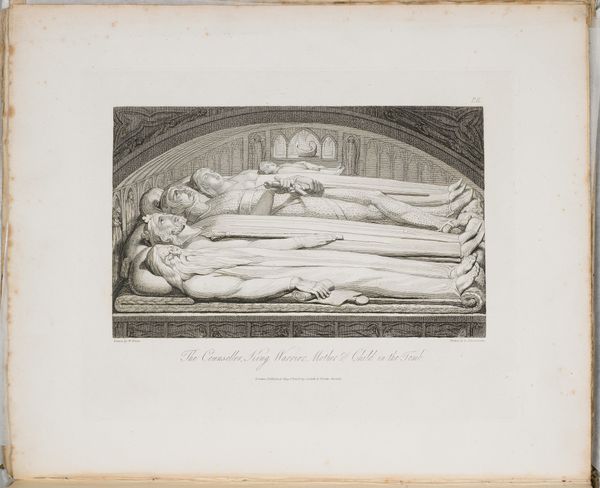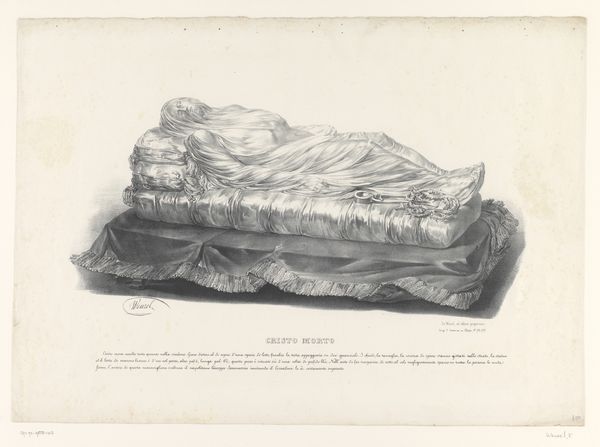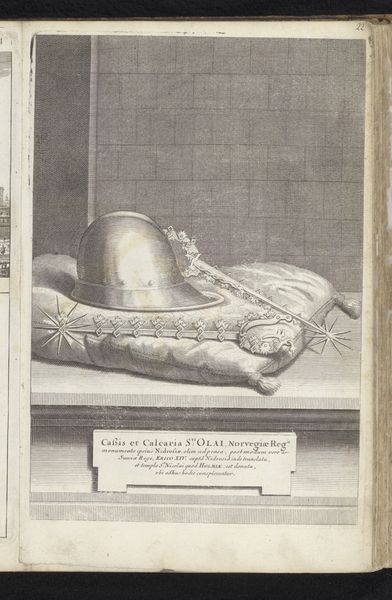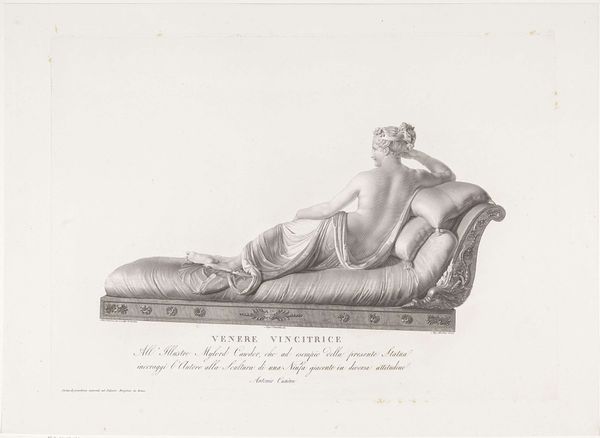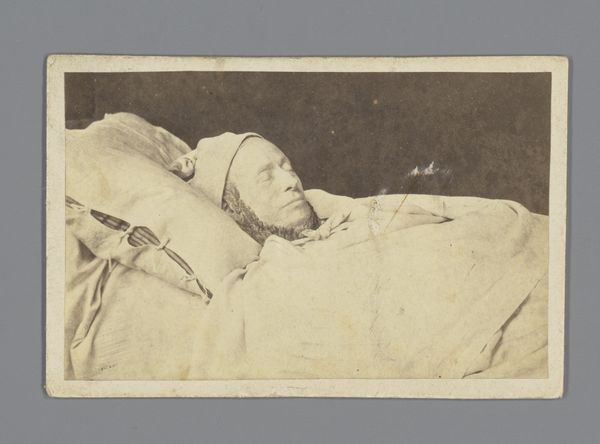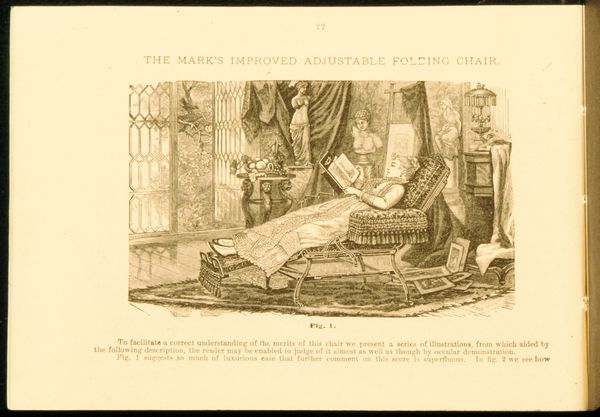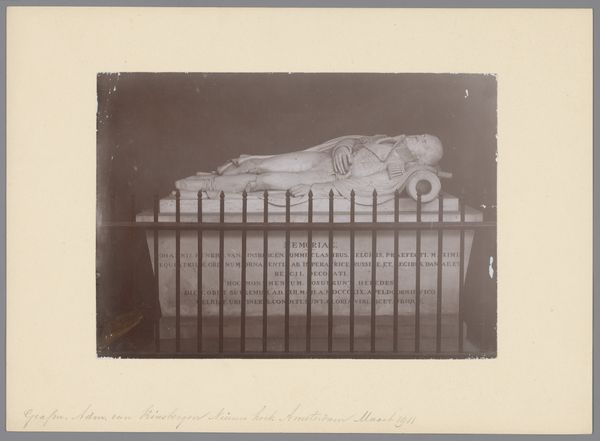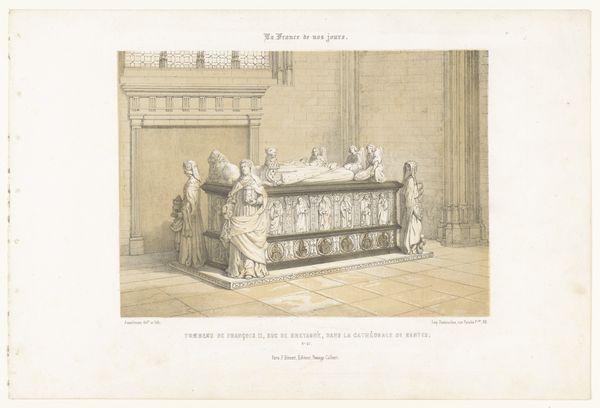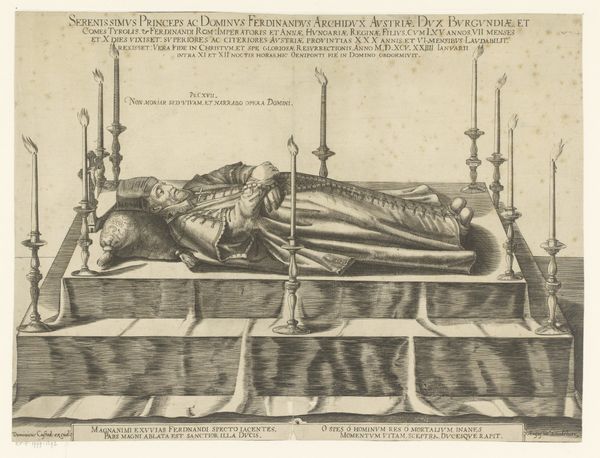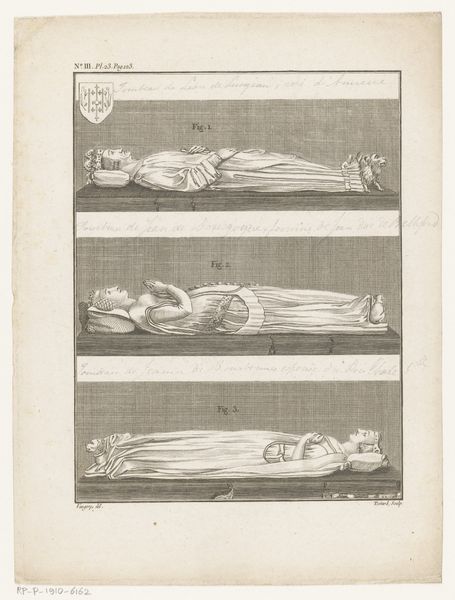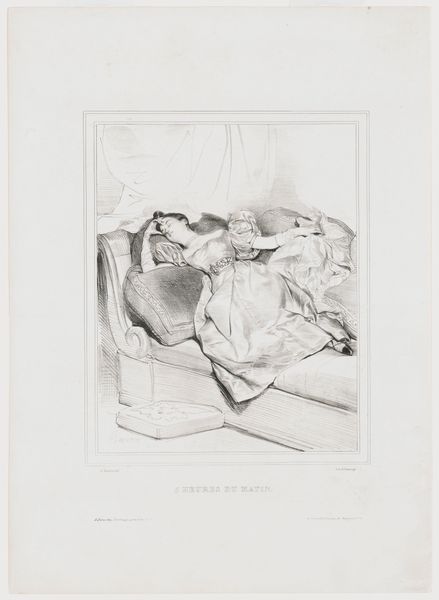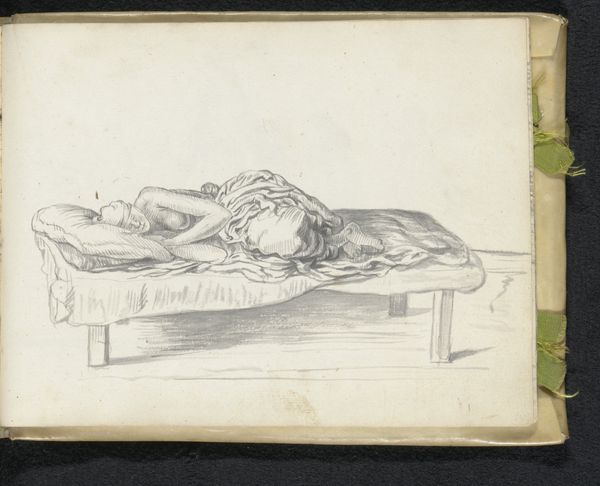
The dead Christ, wrapped in a shroud, after the marble statue in the Sansevero Chapel, Naples 1840 - 1850
0:00
0:00
drawing, print, engraving
#
portrait
#
drawing
#
neoclacissism
# print
#
figuration
#
romanesque
#
coloured pencil
#
history-painting
#
academic-art
#
engraving
#
realism
Dimensions: Image: 7 3/8 × 15 7/8 in. (18.7 × 40.4 cm) Sheet: 14 13/16 × 21 3/16 in. (37.7 × 53.8 cm)
Copyright: Public Domain
Curator: This is a print made by Francesco Wenzel between 1840 and 1850, currently residing here at the Metropolitan Museum of Art. The work is titled "The dead Christ, wrapped in a shroud, after the marble statue in the Sansevero Chapel, Naples". Editor: It’s a powerfully somber piece. The way the shroud clings to the figure, the stark contrast between light and shadow—it creates an atmosphere of intense grief and stillness. Curator: Indeed. What’s interesting to consider is that this print is not an original composition, but rather a reproduction of a sculpture. So, the materiality shifts significantly. Wenzel transforms marble into ink on paper, introducing an element of reproducibility to what was originally a unique, hand-crafted object. The means of distribution also dramatically changes with the mass production potential of printmaking. Editor: I’m particularly drawn to how Wenzel captures the texture of the shroud. The folds, the delicate rendering of the fabric—it's all quite effective. He’s clearly engaged in a close reading of the original sculpture's formal properties and how they might translate through line and shading. What kind of impact do you think the reproductive aspect had on its reception? Curator: It broadens the artwork's reach, certainly, making this intensely emotional image available to a much wider audience who would never see the sculpture in Naples. At the same time, the print alters the art experience. It is meant for a different kind of engagement, maybe personal contemplation in the home. Also, prints like this became easily consumable commodities in the art market, didn't they? Editor: Yes, the shift in context inevitably changes how we perceive the work. The shift of scale has impact; it becomes more portable, more intimate perhaps. You’ve given me much to think about, reflecting on the levels of distance and removal involved in appreciating artwork in print. Curator: It shows how art's meaning isn’t fixed. Considering how its context, method of production and means of access affects the relationship of viewers to artwork has broadened our perspective considerably.
Comments
No comments
Be the first to comment and join the conversation on the ultimate creative platform.
